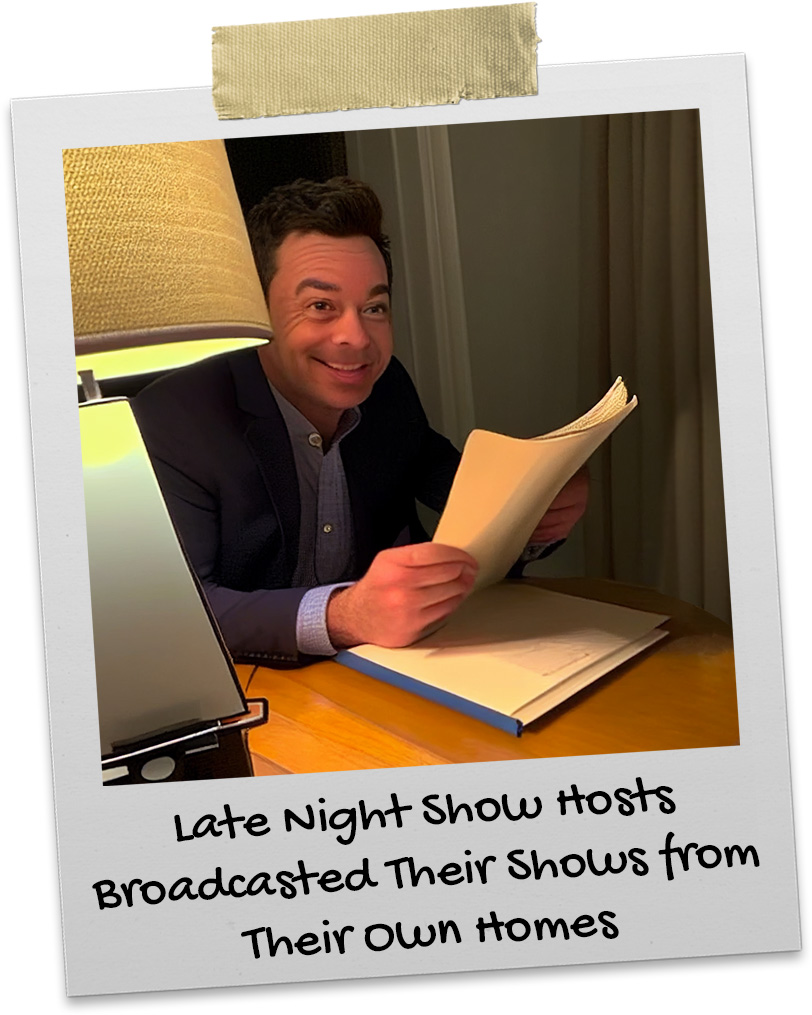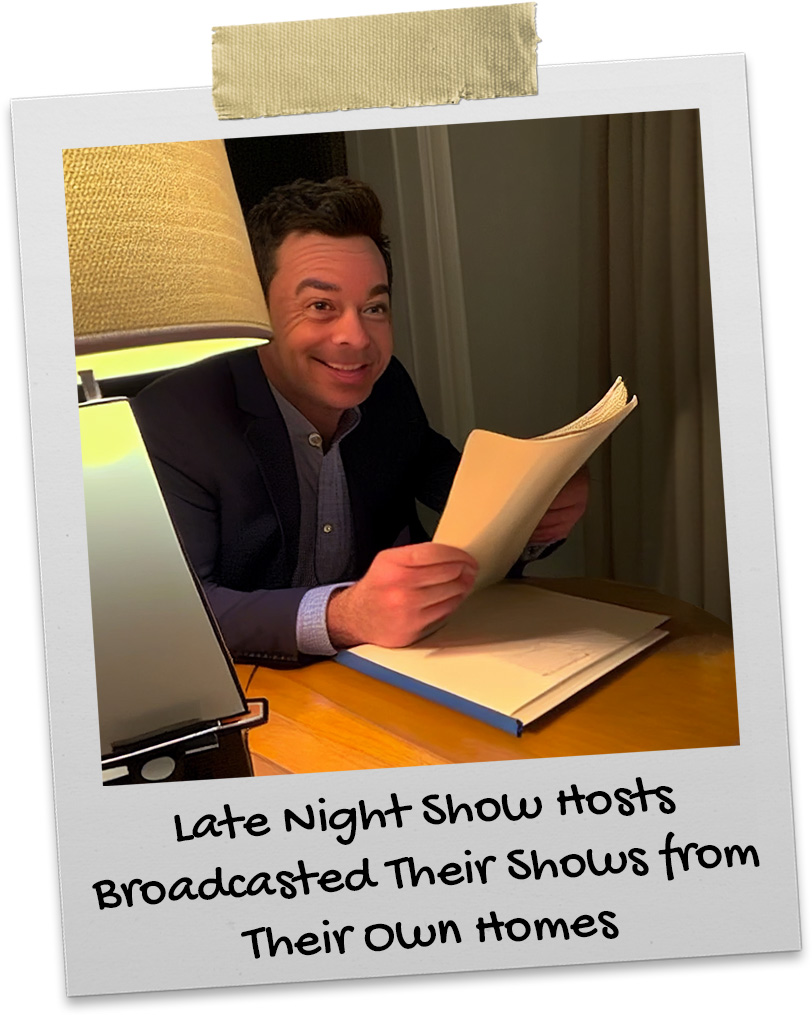Late Night Show Hosts Broadcasted Their Shows from Their Homes


With everyone stuck at home, late-night talk show hosts, used to performing in front of a live studio audience, were faced with a dilemma: how to keep the show going, while also keeping themselves and their crew safe? The solution was to bring the show to their own homes.
Jimmy Fallon, Jimmy Kimmel, Seth Meyers, Conan O’Brien, and others got creative, setting up makeshift studios in their living rooms, kitchens, and basements, and using technology to connect with their guests and audiences. It wasn't always smooth sailing—there were technical glitches, jokes and bits that absolutely bombed, and awkward production moments as they figured out the best way to fill an hour of semi-scripted television programming from their homes, but they eventually found their footing, and put out an entertaining product.
One of the biggest challenges was finding ways to keep their shows fresh and engaging, despite the limited scope of their surroundings and without all their production staff. They got creative. They found new ways to do sketches and segments that worked within the confines of their homes. Their kids helped with the on-screen graphics. Their wives would double as their co-hosts. They had virtual appearances by celebrities, sharing jokes and stories, and offering a glimpse into their own quarantined lives. They had DIY segments demonstrating how to make everything from cocktails to papier mache masks, using only household items and a dash of humor and improvisation. They navigated the challenges and the uncertainty of the times and used their platforms to offer comfort, levity, and perspective.
The hosts addressed the weighty issues of the day, from the pandemic, to the social protests, to the turbulent political landscape, with honesty, humor, and humanity. It was a time when they let you behind the facade and presented themselves as real human beings, and it was very touching.
For many viewers, the late night talk show was a source of solace and connection during a time of isolation and anxiety. It offered a respite from the chaos and the uncertainty of the world. It was a reminder that, even in the darkest of times, there is always the possibility of laughter and joy. It probably made some television executives wonder if they needed such gigantic staffs for these shows once they returned to normal.



